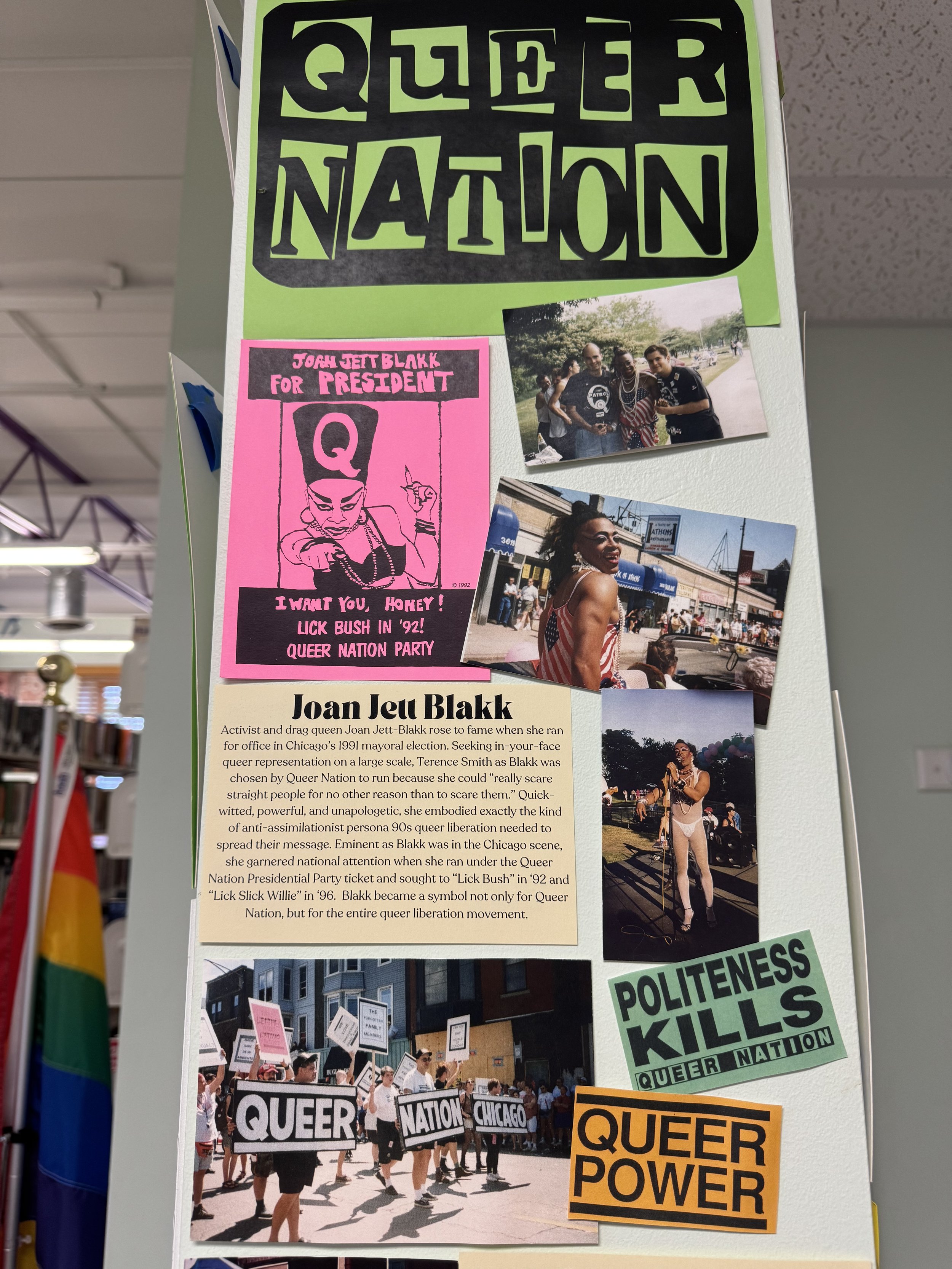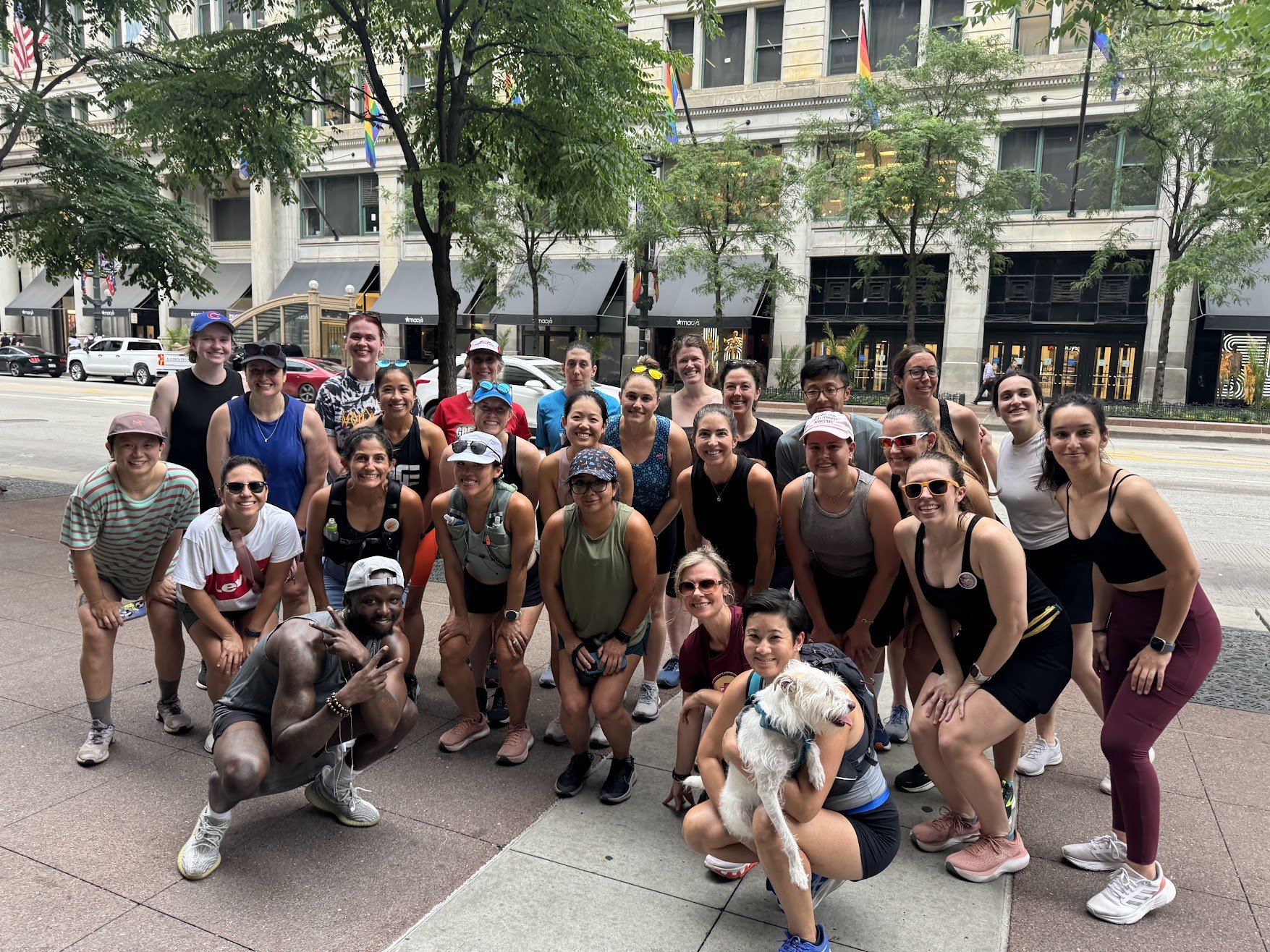What Was Queer Pulp?
By Jen Dentel with Allison Yates
At Read & Run Chicago, we use movement and literature to explore Chicago. Our book-themed guided runs often teach us about lesser-known histories and genres like Pulp novels and author Velma Young (frequent pen name Valerie Taylor), a trailblazer in the pre-Stonewall LGBTQ activist movement in Chicago and beyond. For the last four years, we’ve collaborated with Gerber/Hart Library & Archives to host our annual Pride Month event, a Running Tour of The Girls in 3-B and post-run lecture with Jen Dentel of Gerber/Hart Library & Archives. During this event, readers & runners see real-life Queer history on the Near North Side and the Loop inspired by the fictional Queer Pulp novel, The Girls in 3-B, and continue understanding context and significance of this book and its genre after the route.
[Related: Must-Read Chicago Books Inspiring Summer 2025 Events]
[Related: Pride Month at Read & Run Chicago]
What was Queer pulp?
Subversive? Trash? Both? There are many differing opinions as to what Pulp novels represent. Known as being disposible (read it on the bus!) and so named for the cheap quality of their paper, many associate Pulp with their lurid covers and highly sexualized, voyeuristic topics, often sensationalizing the experiences of marginalized groups. Because “legitimate” publishers would censor much of the subject matter in Pulps—like queer themes—Pulps were not taken seriously as a genre or seen as true literature. Even though Pulp novels—given that they were not taken seriously—could mention homosexuality, they couldn’t promote it. Characters who engage in Queer acts were often taught a “moral lesson,” whether it be dying by suicide, eventually conforming into a heterosexual marriage, or suffering severe mental health issues.
“Apparently anything goes, just so everyone is miserable in the last chapter.”
Author Velma Young went by the pen name “Valerie Taylor.” She was born in Aurora, IL, in 1913. She married a man and later divorced, embracing her queerness in her 30s. In the 1950s-60s she was heavily involved in Chicago’s activist scene, co-founding Mattachine Midwest with Pearl Hart (one half of Gerber/Hart’s name), her partner until Pearl’s death. Learn more here.
Within the LGBTQ+ community, Pulp novels have a complex history: on the one hand, most lesbian pulps were written by heterosexual men for other heterosexual men. On the other hand, pulps were one of the few places where queer people saw themselves represented, and there were also many LGBTQ+ authors of pulp who subverted the formula and used this “trashy” genre as a way of finding community. Many queer people described Pulp novels as the first discovery that they weren’t completely alone. Today, Queer Pulp is seen as an act of resistance.
Want to keep learning? Jen Dentel, the Community Outreach and Strategic Partnerships Manager at Gerber/Hart Library and Archives and Read & Run Chicago lecturer at our annual Pride Month Running Tour of The Girls in 3-B, created this list below of Queer Pulp novels, reference books, history accounts, and more.
Your Queer Pulp Reading List
If available, links to purchase on our Bookshop.org shop are included below. Book titles and articles without links are available on other websites and at Gerber/Hart Library & Archives in Rogers Park, Chicago.
Actual pulp
Bannon, Ann – Beebo Brinker Chronicles
Highsmith, Patricia – The Price of Salt
Packer, Vin (Marijane Meaker) – Spring Fire
Taylor, Valerie – any and all, but especially The Girls in 3-B, Stranger on Lesbos, Return to Lesbos, and Unlike Others
Valerie Taylor-specific reading
Taylor, Valerie “Five Minority Groups in Relation to Contemporary Fiction,” Mattachine Review, 1961
Dentel, Jennifer - “Midwestern farmers’ daughters: heartland values and cloaked resistance in the novels of Valerie Taylor” from Queer Between the Covers: Histories of Queer Publishing and Publishing Queer Voices
Chicago-specific
Austin, Jill and Brier, Jennifer - Out in Chicago: LGBT History at a Crossroads
Baim, Tracy – Out and Proud in Chicago
De La Croix, St. Sukie - Chicago Whispers: A History of LGBT Chicago Before Stonewall
[Related: The Real-Life Activists That Helped Inspire The Great Believers]
Bibliographies
Damon, Gene and Lee Stuart - The Lesbian in Literature: A Bibliography
Foster, Jeanette – Sex-Variant Women in Literature
[Related: 14 Books & Resources to Learn about Pre-Stonewall LGBTQ History in Chicago]
Historical Background
Brandt, Kate - Happy Endings: Lesbian Writers Talk about their Lives and Work
Bronski, Michael – Pulp Friction: Uncovering the Golden Age of Gay Male Pulps
Faderman, Lillian - Odd Girls and Twilight Lovers: A History of Lesbian Life in Twentieth Century America
Faderman, Lillian - Surpassing the Love of Men: Romantic Friendships and Love Between Women from the Renaissance to the Present
Forrest, Katherine V - Lesbian Pulp Fiction: The Sexually Intrepid World of Lesbian Paperback Novels 1950-1965
Keller, Yvonne - “Pulp Politics: Strategies of Vision in Pro-Lesbian Pulp Novels, 1955-1965” in The Queer Sixties
Stryker, Susan - Queer Pulp: Perverted Passions from the Golden Age of the Paperback
[Related: What Was Queer Lakeview Like In The 1980s?]
Tahnee Lacey with Queer Pulp in June 2024 at our Running Tour of The Girls in 3-B.
Want to learn more? Visit these LGBTQ archives around the U.S.
Chicago: Gerber/Hart Library and Archives
Birmingham: Invisible Histories
Los Angeles: ONE Archives
New York City: Lesbian Herstory Archives
Minneapolis: The Jean-Nickolaus Tretter Collection in Gay, Lesbian, Bisexual and Transgender Studies
Readers & runners in front of the historic Marshall Field & Co building (now Macy’s) in Chicago’s Loop in June 2024 on our Running Tour of The Girls in 3-B.








